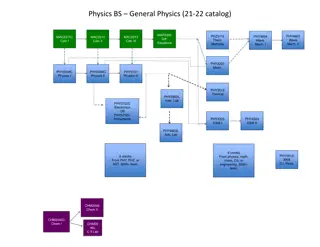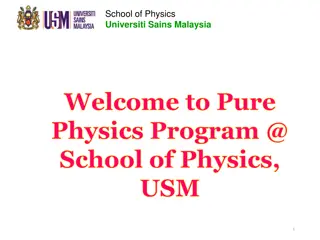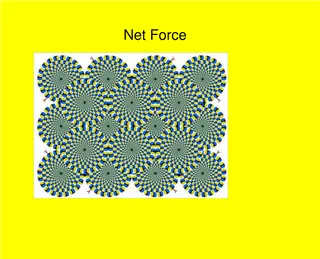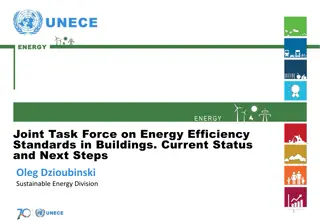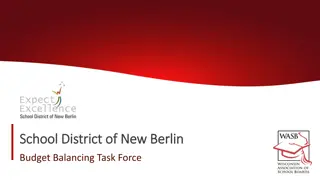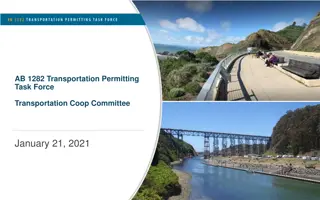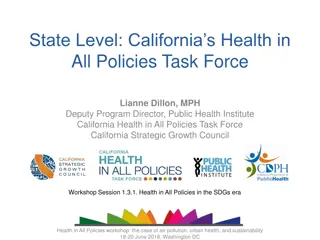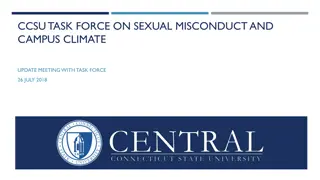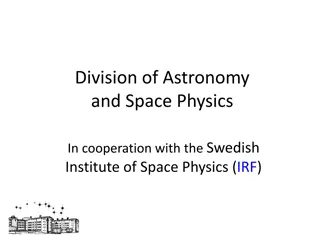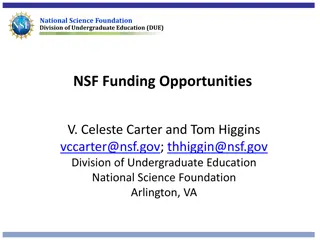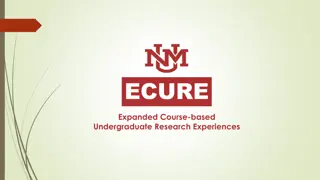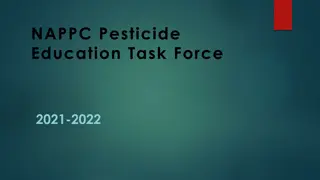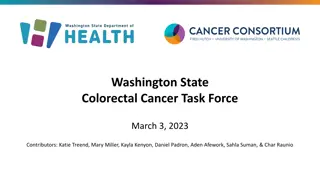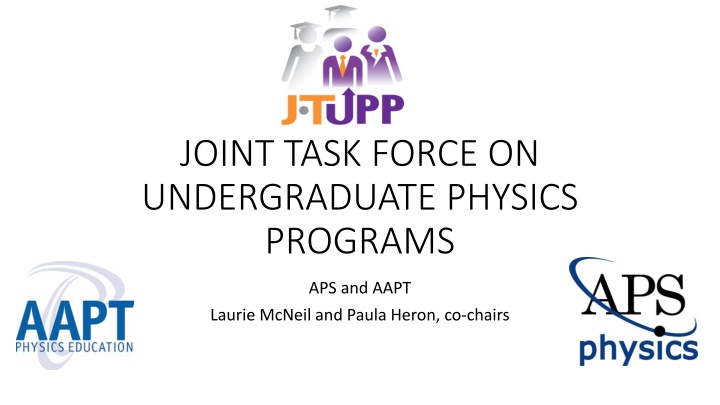
JOINT TASK FORCE ON UNDERGRADUATE PHYSICS PROGRAMS
A collaborative effort by the American Physical Society and the American Association of Physics Teachers focusing on essential skills and knowledge for undergraduate physics degree holders. The task force provides guidance on curriculum revisions, student diversity, content improvement, and professional skills. Membership includes renowned physicists and a structured timeline for report completion and dissemination.
Download Presentation

Please find below an Image/Link to download the presentation.
The content on the website is provided AS IS for your information and personal use only. It may not be sold, licensed, or shared on other websites without obtaining consent from the author. If you encounter any issues during the download, it is possible that the publisher has removed the file from their server.
You are allowed to download the files provided on this website for personal or commercial use, subject to the condition that they are used lawfully. All files are the property of their respective owners.
The content on the website is provided AS IS for your information and personal use only. It may not be sold, licensed, or shared on other websites without obtaining consent from the author.
E N D
Presentation Transcript
JOINT TASK FORCE ON UNDERGRADUATE PHYSICS PROGRAMS APS and AAPT Laurie McNeil and Paula Heron, co-chairs
Joint Task Force on Undergraduate Physics Programs An effort by the American Physical Society and the American Association of Physics Teachers to answer the question: What skills and knowledge should the next generation of undergraduate physics degree holders possess to be well prepared for a diverse set of careers? Providing guidance to physicists on: Revising undergraduate curriculum Educating a diverse student population Improving content, pedagogy, professional skills, and student engagement For more information or to provide input, contact: Paula Heron, co-chair pheron@uw.edu Laurie McNeil, co-chair mcneil@physics.unc.edu compadre.org/jtupp
J-TUPP MEMBERSHIP Paula Heron, co-chair, University of Washington Laurie McNeil, co-chair, University of North Carolina, Chapel Hill Douglas Arion, Carthage College Walter Buell, The Aerospace Corporation S. James Gates, University of Maryland Sandeep Giri, Google Inc. Elizabeth McCormack, Bryn Mawr College Helen Quinn, Stanford Linear Accelerator Center Quinton Williams, Howard University Lawrence Woolf, General Atomics Aeronautical Systems Society liaisons: Ted Hodapp, APS Renee Michelle Goertzen, APS Beth Cunningham, AAPT Bob Hilborn, AAPT Not pictured: Sandeep Giri
APPROXIMATE TIME LINE Task Force formed: Summer 2014 Initial meeting: November 2014 Data-gathering, (initial) report drafting: 2015 Second and third meetings: April, December 2015 Completed report: Spring 2016 Review and revision: Summer 2016 Final report and dissemination: September 2016
A FEW FACTS 7500 people graduate with bachelor s degrees in physics each year 350 people are hired as physics faculty members each year 5% of all physics bachelor s eventually end up as physics professors 40% of bachelor s graduates enter the workforce immediately 53% work in the private sector 13% work in colleges and universities 11% work in high schools 10% work in civilian government or national laboratories 8% work in the military 35% of physics PhD holders work in 4-year academic institutions Various reports, AIP Statistical Research Center
WHAT DO EMPLOYERS WANT? 1. The ability to work well in teams especially with people different from oneself 2. An understanding of science and technology and how they are used in real-world settings 3. The ability to write and speak well 4. The ability to think clearly about complex problems 5. The ability to analyze a problem to develop workable solutions 6. An understanding of global context in which work is now done 7. The ability to be creative and innovative in solving problems 8. The ability to apply knowledge and skills in new settings 9. The ability to understand numbers and statistics 10. A strong sense of ethics and integrity 11. Ability to make decisions and solve problems 12. Ability to sell or influence others 13. Ability to plan, organize and prioritize work
CONCLUSIONS FROM MANY STUDIES Physics graduates can choose many careers: bring flexibility, problem-solving skills, technology exposure Technical skill base should be expanded: more computational analysis tools, esp. industry-standard packages We need to better communicate the capabilities of physics graduates: private sector, government, industrial positions Physics graduates would benefit from broader engagement with industry- type work: internships and applied research projects Physics graduates would benefit from more connection in their education between physics content and innovation Need better preparation in workplace skills: teamwork, communication, basic business understanding
INCENTIVES FOR CHANGE Attract, retain, and better prepare students Students expect relevance, authenticity, application Clear connection between majoring in physics and rewarding careers will attract more diverse students (incl. 1st-generation college-goers and URMs) Clear connection between majoring in physics and solving societal problems will attract more diverse students (esp. women) NGSS provides learning experiences defining problems, investigating, analyzing and interpreting data, developing and using models, applying scientific knowledge, communicating information: students will expect this Enhancing career skills also enhances preparation for graduate school
INCENTIVES FOR CHANGE cont. Attract new resources Connecting research with topics of interest to private sector can help establish new collaborations and new sources of research funding. Even esoteric topics (see Google X, Microsoft Station Q) Preparing graduates for success in high-paying jobs can lead to generous alumni and corporate support for programs Improve program impact Enhance connections with other disciplines, joint research projects and double majors Enhance reputation, recruit excellent faculty with wide range of research interests. Increased enrollment allows growth in faculty numbers Broad research portfolio makes department attractive
WHAT THE REPORT WILL CONTAIN View of the landscape: statistics, other disciplines, pressures physics programs face, findings from studies of employment and workplace skills The case for change Knowledge, skills and attitudes needed for success in the workplace Learning goals for physics programs: departments decide which to embrace Approaches to achieve the learning goals Modifying courses within the existing curriculum Modifying the curriculum (changing requirements of the major) Infusing new skills into thesis/research requirements Creating new tracks or programs Utilizing co-curricular activities How to accomplish programmatic change Role of professional societies and funding agencies
LEARNING GOALS FOR PHYSICS PROGRAMS Physics-specific knowledge, e.g. Basic laws of physics Mathematical representation Problem-solving, including in applied areas Scientific and technical skills, e.g. Solve both well-posed and ill-posed questions and problems. Competency in basic experimental technologies Coding competency: write and execute a software to explore, simulate or model physical phenomena Software competency: learn and use industry-standard computational, design, analysis and simulation software Data analytics competency: analyze data (incl. statistical and uncertainty analysis), distinguish between models, present results appropriately
LEARNING GOALS FOR PHYSICS PROGRAMS cont. Communication skills, e.g. Communicate with audiences from different cultures with maximum impact Orally communicate physics and technology concepts to scientists and non- scientists Organize and communicate ideas using words, mathematical equations, tables, graphs, pictures, diagrams and other visualization tools. Professional/workplace skills, e.g. Collegiality and collaboration in diverse teams Awareness of standard practices for effective resumes and job interviews Critical life skills: completing work on time, listening, optimism, time management, responsibility, cultural and social competence, Awareness of career opportunities and pathways for physics graduates
APPROACHES TO ACHIEVE THE LEARNING GOALS Modify courses Incorporate application of physics principles to industrial processes and commercial devices into lab exercises Incorporate industry-standard software (CAD, LabView, OSLO, ) Homework problems involving real-world and cross-disciplinary applications Organize course around a specific technology Use solar cells to teach quantum mechanics, thermal physics, optics, E&M, solid state physics, etc. Open-ended lab projects to build teamwork and project definition and management skills
APPROACHES TO ACHIEVE THE LEARNING GOALS cont. Modify curriculum Make major more flexible to meet different career goals (grad school, engineering job, entrepreneurial efforts) Substitute courses from speech, business, technical and creative writing, engineering, computer science, philosophy (ethics/reasoning skills) for some standard or elective courses Encourage more students to take industry-related courses as electives: solid state, optics, electronics Adopt communicating in the discipline requirement within the major: lab courses, capstone courses, student research presentation Guide students to satisfy general education requirements with courses that offer professional development
APPROACHES TO ACHIEVE THE LEARNING GOALS cont. Infuse new skills into thesis/research requirement Commercial/applied research projects Commercial software packages Maker spaces to design, develop and test products or solutions Presentations of research findings to varied audiences (including non- scientists) Senior seminar including resume-writing and interviewing, presentations by physicists in varied careers Create new tracks or programs Applied physics Entrepreneurship Joint programs with engineering, CS, medicine, graphic arts,
APPROACHES TO ACHIEVE THE LEARNING GOALS cont. Utilize co-curricular activities Speakers (incl. alumni) on industrial/applied physics topics, meet w/students SPS activities for professional development, incl. field trips Extra-departmental events: speakers, trade shows, local prof. society chapter meetings (IEEE, OSA, ) Internships/co-ops Career Services for resume-writing, interviewing, job search techniques, etc.
For information or to provide input to the Task Force: Laurie McNeil, co-chair mcneil@physics.unc.edu Paula Heron, co-chair pheron@uw.edu To see the report (in September): compadre.org/jtupp

